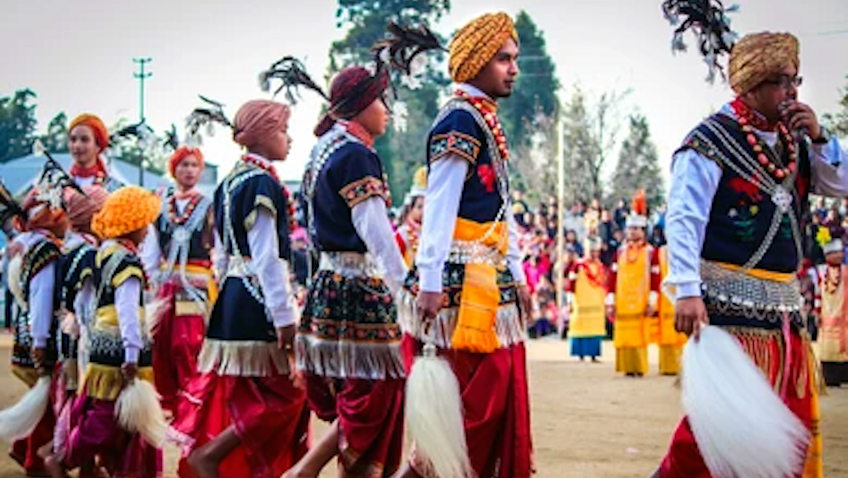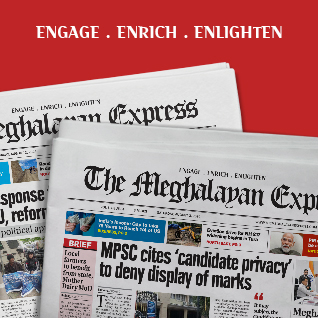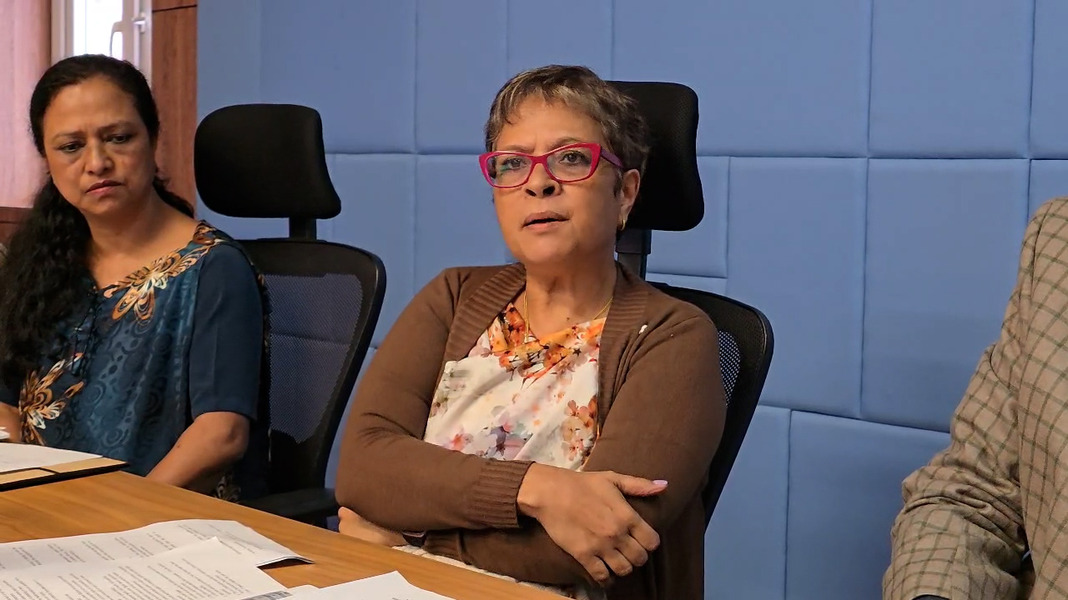By: Bah Erwin K. SyiemSutnga
In the Khasi-Jaintia Hills, the land of the Hynniewtrep, our traditional governance system is deeply rooted in the will of the people, with the villagers at the grassrootelecting their leaders such as MyntriShnong, SordarShnong, WahehShnong, and RangbahShnong, among other village officials. These village leaders, though their titles vary based on the region, are responsible for managing village affairs, maintaining customs and traditions, overseeing land matters, implementing various government schemes, and representing the village in dealings with the two District Councils and the government. Their authority is conferred through sanads (appointments) given by the traditional rulers of the Hima and Elakas, such as the Syiem, LyngdohHima, SirdarElaka, Wahadar, and Dolloi, in accordance with the laws of the District Councils of the Khasi and Jaintia Hills.
This traditional system of governance, a significant objective of the Sixth Schedule of the Constitution of India, continues to be preserved. Village leaders and DorbarShnong (village councils) have become vital institutions, essential to both the Meghalaya and Indian governments. In recent times, with the introduction of laws like the Meghalaya Residents Safety and Security Act (MRSSA), 2016, the responsibilities of village leaders have increased, necessitating rethinking laws that fully empower village governance. Especially as we witness the rise in drug-related issues, illegal immigration, and the need for villages to handle matters of law and order, and cleanliness. Strengthening the powers of village leaders requires implementing proper checks and balances to prevent abuse of power.
In 2017, when I, along with the representatives of the SynjukkiNongsynsharShnongBri u Hynniewtrep, met Rajnath Singh, then India’s Home Minister, he was surprised to learn that our village leaders work voluntarily without remuneration. This is one of the unique features of our traditional governance system.
The Role of Village Leaders – Uniform Responsibilities:
Even though the titles of these village leaders differ by region, their roles and responsibilities in public governance remain the same:
- MyntriShnong: Found in the West and South West Khasi Hills, they are responsible for village administration, resolving disputes, and implementing development projects within their jurisdictions. They represent the village before the District Council and the government.
- SordarShnong: In places like HimaKhyrim, they are known as SordarShnong. Their duties are equivalent to those of the RangbahShnong.
- WahehShnong: In Jaintia Hills District, WahehShnong holds the same responsibilities as the RangbahShnong in Khasi Hills.
- RangbahShnong: Recognized in other parts of the Khasi Hills, these leaders share similar duties.
The Conferral of Power:
While the titles of these village leaders may vary by region, their authority is derived from the sanads they receive. One critical aspect is that these village leaders must earn the full trust of their villagers. They are also expected to follow orders from the KhliehNongsynshar (traditional rulers) and the Executive Committee of the Autonomous District Council that governs them. However, there is a need for a clear understanding of how their relationship with the Government of Meghalaya functions. The sanads given to RangbahShnong come from traditional rulers like the Syiems, Lyngdohs, Sirdars, Wahadars, and Dollois in accordance with the Sixth Schedule, Para 3(1)(g) of the Constitution. In the Khasi Hills, many laws govern the Hima and Sirdarships, while in JaintiaHills, there is the Jaintia Hills Autonomous District (Establishment of Elaka and Village and Election, Appointment, Powers, Functions and Jurisdiction of Dolloi/Sirdar and WahehShnong) Act, 2015.
In recent years, we have seen the Meghalaya Government working with RangbahShnong in various aspects, especially during times of unrest and during the Covid pandemic. The work of the RangbahShnong seems to be based on respect and custom rather than on clear legal mandates. While these leaders derive their power from District Councils through sanads given by the KhliehNongsynshar, there is a need for better coordination between village authorities, District Councils, and the Meghalaya Government to ensure effective governance, especially in maintaining law and order.
Conflicts in Governance faced by RangbahShnong and the Meghalaya Government:
The issues or conflicts that RangbahShnong face in governance and their relationship with the Government of Meghalaya arise because their powers come from District Councils through the KhliehNongsynsharHima and Elakas, who issue sanads. However, they also operate within the state’s public governance system. This dual governance system, blending traditional governance with state governance, brings forth challenges in administration, implementation of laws, and ensuring accountability in the event of governance failures.
Key Areas of Conflict:
- Dual Authority Structure:
- RangbahShnongreceive authority from the District Council and the KhliehNongsynsharHima, based on traditional governance. At the same time, they are expected to work within the laws of the Meghalaya Government, leading to confusion, particularly in matters related to the drug trade, public order, and criminal activities. There is an expectation that RangbahShnong and DorbarShnong will control such issues, but the law does not clearly define their powers. When it comes to serious legal matters, these efforts fail because RangbahShnong and DorbarShnong lack legal empowerment from the government.
- Lack of Clear Legal Framework for RangbahShnong’s Powers:
- The powers of the RangbahShnong are not clearly defined in law, creating opportunities for abuse of power. This is especially true when they issue No Objection Certificates (NOC) or make decisions regarding land transactions. In terms of land, the two Autonomous District Councils have their own land laws, which the public must understand clearly.
- Conflict Between Sanad and Government Authority:
- While RangbahShnongreceive authority from the KhliehNongsynsharHima through sanads, there is no law from the Meghalaya Government that clarifies their powers and how the sanad aligns with state government functions. This creates a lack of clarity and cooperation between the Meghalaya Government and the District Councils.
- Role in Government Welfare Schemes:
- RangbahShnong play a role in implementing government welfare schemes like MGNREGA, but there are allegations of mismanagement and favoritism in the use of government funds. A clear legal framework for oversight is lacking, making it difficult to ensure transparency in the use of these funds.
The Need for Clarifying the Powers and Responsibilities of RangbahShnong and DorbarShnong:
- Clarification of Roles:
- There is a need to clarify the roles of the RangbahShnong within a legal framework that recognizes the sanads they receive from the traditional rulers and aligns with the Meghalaya Government’s legal structure.
- Collaboration with Law Enforcement:
- Clear guidelines for collaboration with the police on different laws are necessary, especially concerning law and order, anti-drug efforts, and public safety.
- Strengthening the Powers of the DorbarShnong:
- The DorbarShnong’s powers should be strengthened to better safeguard against crime, similar to how Village Defense Parties operate in rural areas. In urban areas, Urban Village Volunteer Parties could be introduced to assist in maintaining peace and helping the police apprehend wrongdoers.
- Integration of Traditional and State Governance:
- The state should recognize traditional governance systems by working in collaboration with the District Councils, ensuring that the sanads of RangbahShnong are in line with state governance to handle challenges like crime and public safety effectively.
In conclusion, RangbahShnong, SordarShnong, MyntriShnong, WahehShnong, and DorbarShnong play critical roles in the governance of their communities, maintaining public order, and upholding traditions. However, their powers, as defined by sanads, require proper checks and balances to prevent abuse. Since the Meghalaya Government relies heavily on Rangbah Shnong and DorbarShnong, it is crucial to ensure that there is a clear legal understanding between them and the Autonomous District Councils. We hope for new thinking on this matter, as effective governance requires clear protection under the law and proper guidance for the powers of the RangbahShnong and DorbarShnong in these rapidly changing times with increasing public demands for improved governance, protection of the indigenouscommunities, and fostering development.
As the responsibilities of village leaders grow, it is important to have a well-defined legal framework that ensures their actions align with the needs of modern governance. The balance between respecting traditional governance systems and adapting to the challenges of the present, such as rising crime, drug abuse, and rapid urbanization, requires thoughtful reforms.
In conclusion, Rangbah Shnong and other village leaders must be empowered with clear roles, legal backing, and proper accountability mechanisms to ensure they continue to play an effective role in safeguarding the rights of the people, promoting law and order, and fostering community well-being in the evolving social and political landscape of Meghalaya.
(The writer is a lawyer of High Court of Meghalaya)




